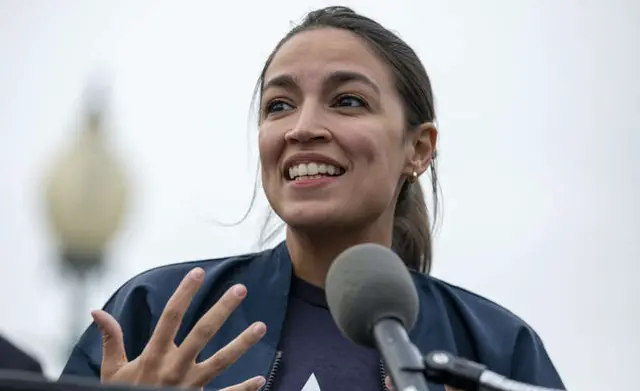The recent special election in Cleveland attracted only passing national attention, but it deserves a closer look. Its result reveals an important national trend: Progressives have trouble winning elections in which a full cross section of voters is allowed to participate.
The defeat of candidate Nina Turner makes clear that the support of the Justice Democrats, the "Squad," and Vermont Sen. Bernie Sanders may handicap Democratic candidates in elections in which a broader swath of the electorate can cast a ballot. More broadly, the result reminds us that state and local voting laws can greatly influence election results — and that so-called voter suppression can apply to blue states as well as those that liberals virtuously denounce.
Shontel Brown, a Democratic centrist and a supporter of Israel, won despite the endorsement of her opponent by Rep. Alexandria Ocasio-Cortez, as well as liberal celebrities such as Mark Ruffalo and the co-founder of Ben and Jerry’s, personal campaigning on behalf of her opponent by Sanders, and a campaign war chest less than half the size of Turner’s.
That’s because, thanks to Ohio election laws that allow a same-day change in party affiliation, voters who had previously voted Republican, in fact, those who voted for former President Donald Trump, put Brown over the top. Without the votes of these Republican and independent voters, Brown would not likely have won.
It’s a result with a lesson for New York and other states with closed primaries. Voters in Ohio’s 11th District only had the chance to cast a meaningful vote in the Democratic primary because of Ohio’s “open primary” system. The contrast with New York, which likes to think “voter suppression” is only a problem in red states, couldn’t be starker. New York state election law required a “change of party enrollment” this year to take place no later than Feb. 12 — four months before the June primary date.
The numbers in the Ohio special election illustrate the impact an open primary can have on an election’s outcome. Brown’s thin margin of 4,302 votes was made possible by running up big victory margins in precincts where Trump was popular, and a significant part of the electorate was made up of non-Democratic voters — particularly conservative and independent Jewish voters. Brown won 91% of the votes in Beachwood, the precinct where Trump had received 42% of the votes. Similarly, in University Heights, Brown won big, with 88.2%. Trump actually won University Heights in 2020, with 58%. Virtually no voters in these precincts voted in the Republican primary — choosing instead to make their voices heard in the Democratic race.
Brown’s victory is not an isolated event. In 2020, similar dynamics played out in open primaries across the country. In Texas's 28th District, centrist and Blue Dog Coalition member Henry Cuellar fended off a challenge from a Justice Democrat-backed candidate. In Ohio’s 3rd District, Joyce Beatty defeated Green New Deal and "Medicare for All" advocate Morgan Harper.
The most notable progressive victory in 2020? Jamaal Bowman defeating longtime Rep. Eliot Engel, a centrist Democrat, in a closed primary in New York's 16th District.
One can argue that having strong and distinct political parties is a plus for democracy. But in a de facto one-party state such as New York, the closed primary system, with an additional high barrier to changing one’s registration, literally disenfranchises a large number of voters. This matters a great deal.
Consider the original election victory of Ocasio-Cortez. She received 17,000 of a total of 30,000 votes in a Democratic primary, with turnout being about 12%. That was enough for her to sneak up on sleeping incumbent, Joe Crowley. In contrast, Brown needed 35,000 of 70,000 total votes to defeat Turner, who, similar to Ocasio-Cortez, got her start in politics working for Sanders. In other words, there were fewer total votes cast in Ocasio-Cortez's key first election than Brown received.
Keep in mind that, by law, all congressional districts include approximately the same number of residents. So in a state where independent and Republican voters are not suppressed, turnout was high — and a full-throated voice of the people was heard.
Democratic centrists, and supporters of Israel, are fortunate that Ohio’s voting laws do not suppress large groups of voters. Supposedly liberal states such as New York should follow Ohio’s lead.
(MSN)
 简体中文
简体中文

